Congress has quickly engaged in putting together potential aid packages for farmers that would more than double the Trump administration's $12 billion under the Farmer Bridge Assistance (FBA) Program.
2020 Farm Sector Income Forecast, February
The USDA’s Economic Research Service (ERS) indicated on Wednesday that, “Net cash farm income is forecast to decrease $10.9 billion (9.0 percent) to $109.6 billion in 2020, relative to the 2019 forecast. Net farm income, a broader measure of profits, is forecast to increase $3.1 billion (3.3 percent) from 2019 to $96.7 billion in 2020.”
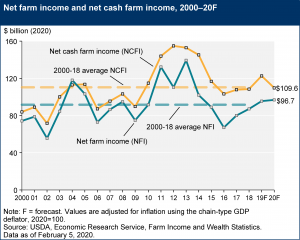
“In inflation-adjusted 2020 dollars, net cash farm income is forecast to decrease $13.1 billion (10.7 percent) and net farm income is forecast to increase $1.4 billion (1.4 percent).
If realized, inflation-adjusted net cash farm income would be below its historical average across 2000-18 and net farm income would be above its historical average across 2000-18.
ERS pointed out that, “Direct government farm payments—which include Federal farm program payments paid directly to farmers and ranchers but exclude USDA loans and insurance indemnity payments made by the Federal Crop Insurance Corporation—are forecast to decrease $8.7 billion (36.7 percent) to $15.0 billion in 2020, following an expected decline in payments from the Market Facilitation Program.”

Reuters writer P.J. Huffstutter reported on Wednesday that, “Washington and Beijing signed an initial deal last month to ease tensions in their trade war, which slowed U.S. farm exports to China. The USDA said on [February 3rd] farmers will start receiving the final tranche of a second round of trade-related aid payments by the end of this week [February 8th].
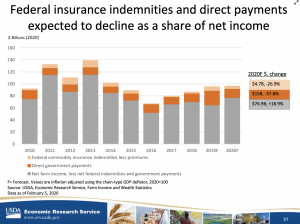
“‘We are assuming these are the final payments,’ USDA Economic Research Service senior economist Carrie Litkowski said on a conference call with reporters.”

The Reuters article added that, “Data show struggles in the U.S. agricultural economy will continue as farm bankruptcies rise and producers face ever-mounting farm debt, prolonged low commodity prices, volatile weather patterns and a fatal pig disease that has decimated China’s herd.”
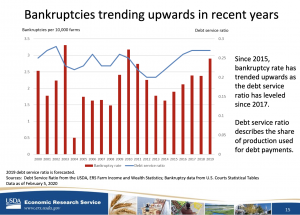
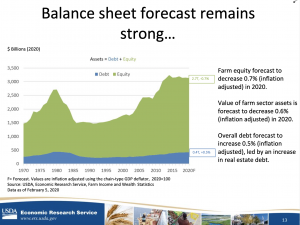
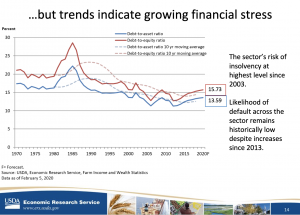
In its update Wednesday, ERS indicated that, “Soybean receipts in 2020 are expected to decrease $0.9 billion (2.5 percent) in nominal terms, as lower quantities should outweigh positive price effects. Corn receipts are expected to rise by $1.0 billion (2.1 percent) in 2020 relative to 2019.”
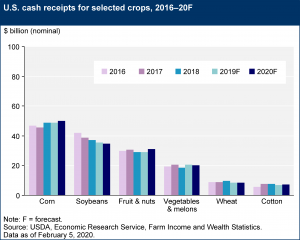
Wednesday’s update also provided a perspective on farm household income, and stated that, “Farm households typically receive income from both farm and off-farm sources.
Median farm income earned by farm households is forecast to increase in 2019 to -$1,383 from -$1,735 in 2018 but then decline slightly to -$1,840 in 2020.
“In recent years, roughly half of farm households have had negative farm income each year.”

“As a result, many of these households rely on off-farm income—and median off-farm income is forecast to increase each year, up 2.2 to $67,314 in 2019 and up 1.9 percent to reach $68,589 in 2020.”





